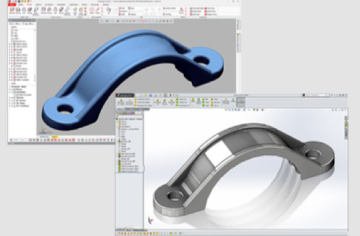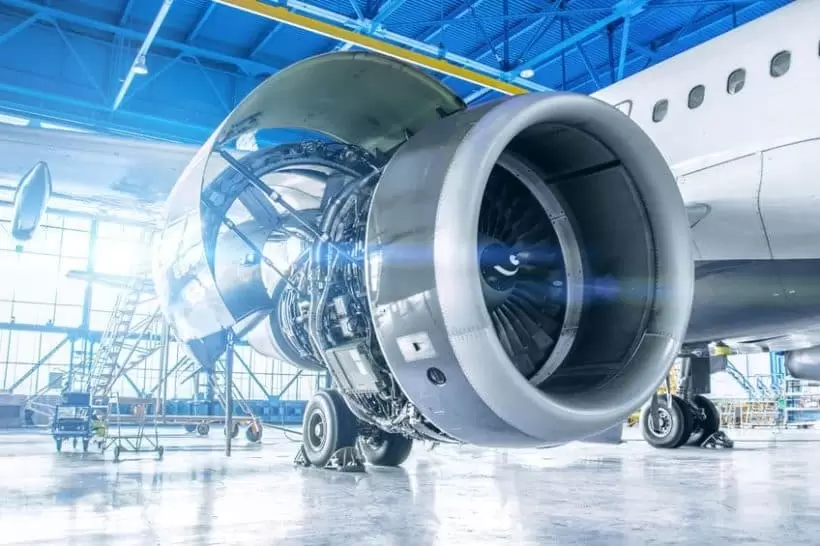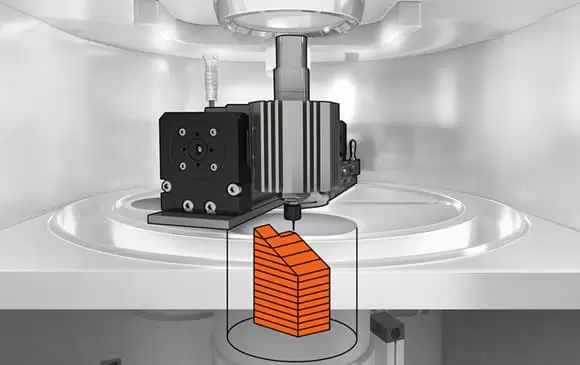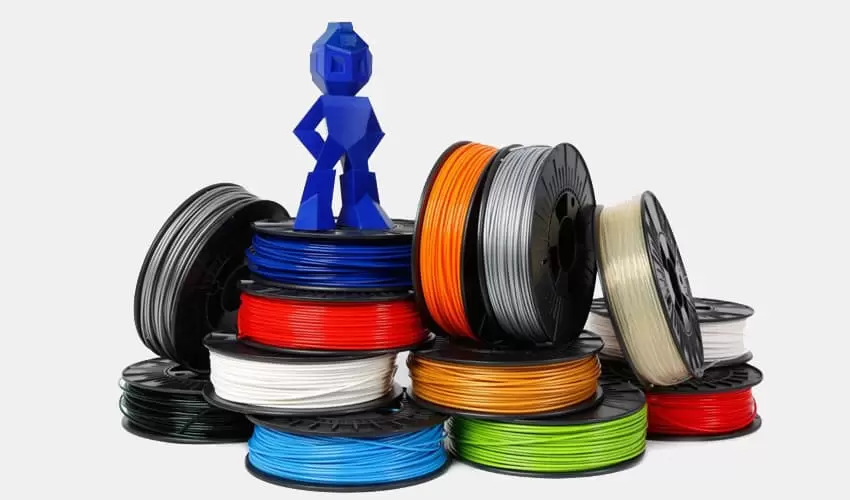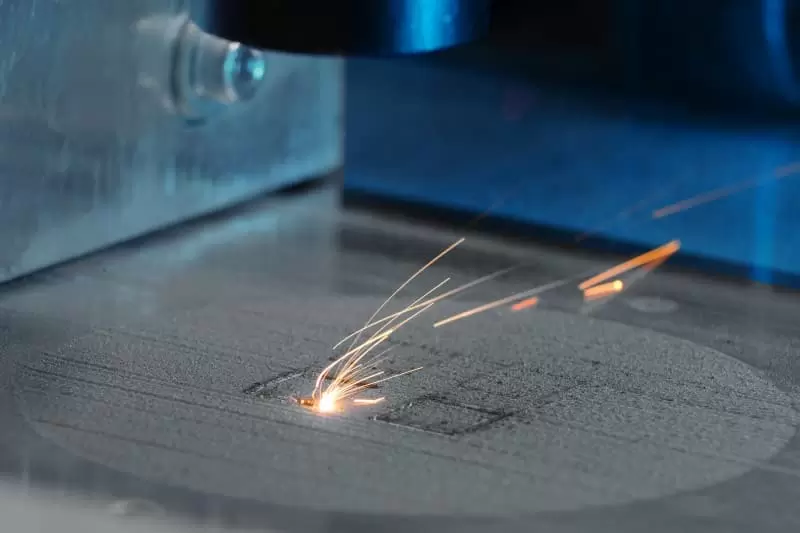we explore the revolutionary impact of additive manufacturing on titanium aerospace applications. From understanding the unique properties of titanium to mastering the latest additive manufacturing techniques, this guide provides a comprehensive overview of how these cutting-edge technologies are transforming the aerospace industry. Discover how additive manufacturing enables lightweight, complex, and cost-effective production of titanium components for aircraft, spacecraft, and satellites. Join us on this journey as we uncover the secrets of additive manufacturing in titanium aerospace applications and unlock their full potential.
I. Introduction
A. Overview of Additive Manufacturing in Aerospace Applications
Additive manufacturing has emerged as a transformative force in the aerospace industry, redefining the way aircraft components are designed and produced. This technology allows for lightweight and complex geometries to be created that were not possible with traditional manufacturing methods. It provides opportunities to reduce costs through less material waste and optimized designs. Aircraft can be produced with stronger and more durable parts that improve performance and safety. This section will provide a comprehensive overview of additive manufacturing in aerospace applications, highlighting its significance in enhancing efficiency, reducing costs, and pushing the boundaries of design possibilities to advance aerospace technology.
B. Importance and Benefits of Titanium in Aerospace
Titanium, known for its exceptional strength-to-weight ratio and corrosion resistance, plays a pivotal role in aerospace applications. The high strength-to-weight ratio of titanium allows for lighter aircraft that can fly farther and carry more payload. Its corrosion resistance means aircraft parts do not degrade over time in harsh environments, extending the lifespan of components. This part of the guide will delve into the importance and benefits of titanium in aerospace, exploring how its properties contribute to the development of lightweight, durable, and reliable aircraft components. Understanding why titanium is a critical material for aerospace engineering is important.
C. Objectives of the Guide
The primary objectives of this guide are to provide a comprehensive understanding of additive manufacturing with a focus on titanium in aerospace applications. Readers will gain insights into the properties of titanium that make it well-suited for aerospace use. They will learn about various additive manufacturing techniques such as SLM, EBM, and LMD and how each approach can be applied. The guide also covers important considerations for hardware, software, design, and process control when working with titanium additive manufacturing. Both the advantages and challenges of this technology in aerospace will be examined. Real-world applications and case studies demonstrating current uses are also included. The future prospects of additive manufacturing and titanium are explored to understand how this innovative technology may continue to progress and impact the aerospace industry.
II. Understanding Titanium and Its Aerospace Applications
A. Properties and Advantages of Titanium
Titanium boasts exceptional properties that make it a material of choice in aerospace applications. It has a high strength-to-weight ratio, enabling lighter aircraft. Specifically, titanium alloys have an ultimate tensile strength of over 150,000 psi. They also have a density of around 4.5 g/cm3, lower than nickel alloys and some steel alloys. This allows aircraft to fly farther and carry more payload. In addition, titanium has outstanding corrosion resistance. The protective oxide layer that forms on the surface prevents degradation from harsh environments like saltwater. Understanding these key properties, including high strength, low density, and corrosion resistance, is essential for appreciating why titanium is favored in aerospace engineering applications where lightweight and durable materials are important.
B. Common Uses in Aerospace Industries
Titanium finds diverse applications in the aerospace sector, contributing to the construction of critical components in aircraft and spacecraft. In aircraft, titanium is commonly used for structural elements like the fuselage, wings, landing gear, and engine components. It replaces heavier steel alloys. Spacecraft also utilize titanium for parts that require strength and corrosion resistance like fasteners and panels exposed to the elements in space. Understanding the variety of uses, from airframes to jet engines, shows how titanium enhances performance, lifespans, and safety.
C. Challenges in Traditional Manufacturing Methods
While titanium is a valuable material, traditional manufacturing methods pose challenges in shaping and forming intricate aerospace components. Conventional techniques like casting, machining, and joining have issues fully utilizing titanium's strength properties due to defects, microstructure changes from processing, and geometric limitations. For example, casting results in unwanted pores and inclusions that weaken parts. Machining also wastes large amounts of material in the form of chips. These challenges increase costs and restrict design possibilities. This section sets the stage for understanding how additive manufacturing techniques overcome these issues to better utilize titanium in aerospace.
III. Additive Manufacturing Techniques for Titanium Aerospace Applications
A. FDM (Fused Deposition Modeling) for Titanium Parts
Fused Deposition Modeling (FDM) has evolved to include titanium as a printable material. FDM works by extruding thin layers of melted thermoplastic or metal wire through a nozzle to build a part layer-by-layer. For titanium, the process is similar but requires higher temperatures to melt the metal wire. Benefits of FDM for titanium include low cost and ability to print functional prototypes. Potential aerospace applications include small satellite and aircraft components that do not require high strength. Understanding the basic FDM process provides context for its advantages and limitations when working with titanium.
B. SLM (Selective Laser Melting) for Titanium Components
Selective Laser Melting (SLM) is a prominent additive manufacturing technique for titanium in aerospace applications. SLM works by using a high-power laser to fuse metal titanium powder into a solid part, one ultra-thin layer at a time. This provides precision down to 15-50 microns. SLM can produce complex, high-strength titanium parts with mechanical properties equivalent to wrought materials. It is well-suited for critical aircraft components that require lightweight and intricate geometries not possible through traditional methods. The detailed SLM process allows readers to appreciate its advantages over conventional manufacturing.
C. EBM (Electron Beam Melting) for Titanium Production
Electron Beam Melting (EBM) introduces a unique approach to titanium production, leveraging an electron beam to melt and fuse titanium powder. Similar to SLM, it builds parts layer-by-layer but uses an electron beam instead of a laser as the power source. EBM has the advantage of being able to 3D print parts with unmelted powder remaining inside, allowing internal features and lattice structures. It is well-suited for aerospace components like engine housings. The EBM method provides faster build speeds than SLM but slightly lower resolution. Understanding its process helps recognize applications.
D. LMD (Laser Metal Deposition) for Titanium Printing
Laser Metal Deposition (LMD) is a versatile technique applicable to titanium printing. In LMD a laser is used to direct metal powder flow onto a substrate where it consolidates each deposited bead, building a part layer-by-layer. LMD can be used for additive repairs of aerospace components to extend lifecycles or produce new parts. It has the advantage of not requiring support structures. Understanding the basic LMD process and how it differs from SLM and EBM provides useful context for its applications.
IV. Hardware and Software Considerations
A. 3D Printers and Their Capabilities for Titanium
Selecting the right 3D printer is pivotal in achieving success in titanium aerospace applications. Printers designed for titanium must handle high temperatures and have build volumes large enough for aircraft parts. For example, SLM and EBM systems feature build plates measuring 8-12 inches cubed and use lasers or electron beams capable of melting titanium powder. FDM machines use higher temperature extruders for melting titanium wire but have smaller build volumes. Understanding the capabilities and limitations of different 3D printer types helps ensure the appropriate technology is selected for aerospace applications.
B. Titanium Powders and Filaments
The choice of titanium powders and filaments significantly influences the quality and characteristics of printed components. A variety of powder grades exist ranging from 90-99% pure titanium and in different particle sizes. For SLM and EBM, finer powders below 45 microns are often used to achieve high densities and mechanical properties. Larger particle filaments around 1.75mm diameter are used for FDM. Powder characteristics like flowability and packing density also impact the final part properties. Selecting materials matched to the 3D printing process is important to achieve the desired outcomes.
C. Software Tools for Design and Simulation
Software tools play a crucial role in the additive manufacturing process for titanium aerospace applications. 3D CAD software is used for complex component designs optimized for additive manufacturing. Simulation tools then validate the design and optimize support structures and build orientation. Post-processing software aids inspection. Understanding the design to print workflow enabled by software helps users leverage these tools to their full potential for titanium 3D printing projects.
V. Advantages and Challenges of Additive Manufacturing in Titanium Aerospace Applications
A. Lightweight and Customization Benefits
Additive manufacturing offers significant advantages in the aerospace sector, particularly in achieving lightweight structures and customization. The layer-by-layer printing process allows for intricate internal cavities and lattice structures that reduce weight. Parts can be optimized based on load requirements to use only the necessary material. Complex organic shapes not possible with casting or machining further reduce weight. Customized components tailored for specific aircraft help differentiate models. Overall aircraft performance is improved through weight savings and design flexibility.
B. Cost-Efficiency and Sustainability Aspects
While additive manufacturing provides numerous benefits, it's essential to address cost-efficiency and sustainability aspects for widespread adoption. Upfront costs of printers and long print times increase part costs today. However, less waste, simplified designs, and on-demand printing reduce long-term costs. As the technology matures, costs will decline through automation and economies of scale. Sustainability is improved by minimizing material usage and waste compared to subtractive methods. Still, energy consumption from printing and concerns over powder recycling require attention. Understanding both technical
C. Quality Control and Post-Processing Needs
Ensuring the quality of printed titanium components is a critical aspect of additive manufacturing. Porosity and imperfections can compromise strength if not addressed. Non-destructive testing using CT scanning and ultrasonics helps inspect parts for defects invisible to the naked eye. Heat treatments and surface finishes are often required to achieve final mechanical properties. Grinding and polishing removes surface roughness, while annealing recrystallizes the microstructure. Proper quality control and post-processing are essential to produce flight-worthy parts meeting certification standards. Understanding these quality considerations is important.
VI. Applications and Case Studies
A. Aircraft Wing and Fuselage Construction
Additive manufacturing is being applied to construct lighter aircraft wings and fuselages. For example, Airbus is 3D printing titanium brackets for the A350 aircraft. The organic, lattice structure design reduces weight by 30% compared to machined parts. Bell Textron utilized SLM to 3D print and repair titanium skids on V-22 Osprey engines, extending their lifespan. Understanding real implementations provides valuable context to the guide.
B. Satellite and Spacecraft Parts
In space applications, weight savings from 3D printed titanium parts are especially critical. Lockheed Martin used EBM to produce a bracket for NASA's Orion spacecraft, reducing weight by 70% over machined parts. Additive manufacturing also improves satellite design flexibility for specialized missions. One example is Made In Space, which 3D printed wrenches and other tools to demonstrate on-orbit manufacturing. Case studies offer insights beyond generic discussions.
C. Turbine Engine Components
GE Aviation is developing laser powder bed fusion of Inconel 718 alloy for fuel nozzle guides inside jet engines. The complex cooling channel designs improve efficiency and durability over cast parts. Another application is 3D printing titanium combustor panels for scramjets under DARPA projects. Understanding real component uses provides tangible context versus theoretical discussions.
VII. Future Prospects and Developments in Additive Manufacturing for Titanium Aerospace Applications
A. Emerging Technologies and Research
Additive manufacturing of titanium is rapidly evolving. New techniques like binder jetting of metal powders may expand applications. Alloy development tailors properties to specific uses. Research also improves understanding of microstructure and mechanical properties to certify printed parts. On-machine quality control with integrated sensors and process control through machine learning show promise to improve reliability and throughput. Exploring cutting-edge areas depicts the technology's potential trajectory.
B. Potential Impact on Aerospace Industry and Society
As the technology matures, additive manufacturing is expected to significantly transform aerospace design, development, and manufacturing. On-demand production enables customized small batch parts, reducing costs. Distributed manufacturing near point-of-use simplifies logistics. Overall, these changes may lead to more efficient and responsive aerospace supply chains with positive economic and environmental impacts. New business and operational models will also emerge. Understanding the possibilities inspires readers to consider additive manufacturing's role in future industries.
C. Ethical and Environmental Considerations
The responsible development of additive manufacturing requires consideration of ethics and sustainability. Intellectual property protection prevents technology proliferation for malicious use. Regulations ensure radiation and emissions standards. Designs consider recyclability and use of non-hazardous materials. Overall, additive manufacturing provides opportunities to reduce waste and dematerialize products if guided by environmental stewardship. Addressing its social impacts can help maximize benefits of this promising technology.
VIII. Practical Tips for Successful Additive Manufacturing Projects in Titanium Aerospace Applications
A. Preparing Design Files for Titanium Printing
Design file preparation requires attention to support structures, part orientation, and nesting to pack the build volume. Automated algorithms aid in support placement to minimize material use. Orienting parts vertically improves layer bonding and surface finish while reducing build time. Nesting multiple parts efficiently utilizes the build volume. Addressing these practical considerations early aids the entire printing process.
B. Optimizing Print Settings and Process Control
Print parameters like layer thickness, speed, and laser power must be optimized. Thinner layers improve resolution but increase time. Faster speeds reduce time but impact quality. Proper laser energy fuses powder without defects. Iterative testing determines ideal settings. In-situ process monitoring ensures consistency through automatic parameter adjustment. Addressing settings enables process optimization and repeatable outcomes.
C. Troubleshooting Common Issues and Errors
Issues may include lack-of-fusion porosity, cracking, or distortion. Process problems causing defects require identification and remedy. Comparison to digital models aids defect detection. Solutions involve parameter tuning, design changes, or heat treatment. Documenting troubleshooting lessons learned prevents recurrences. Handling issues properly ensures continuous improvement.
IX. Conclusion
A. Recap of Key Findings and Takeaways
This comprehensive guide covered the fundamentals of additive manufacturing and titanium for aerospace. Readers gained an understanding of properties, techniques, considerations, applications, advantages, challenges and the future potential. The guide aimed to provide a well-rounded perspective and practical guidance for working with this innovative technology.
B. Encouragement for Continued Learning and Innovation
Additive manufacturing promises further advances with ongoing research. Students are encouraged to continue expanding knowledge in this evolving field. Engineers and designers should explore new design possibilities. Industry and academia collaborations will strengthen the technology. With dedication to learning, innovation, and responsible development, additive manufacturing may transform aerospace for the benefit of society. The journey has just begun.
